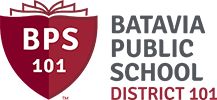7:285-AP, E Exhibit-Allergy and Anaphylaxis Emergency Plan
This form has been adapted with the permission of the American Academy of Pediatrics (AAP), see: https://publications.aap.org/pediatrics/article/139/3/e20164005/53741/Guidance-on-Completing-a-Written-Allergy-and. A district may include its information on this form, but the AAP copyright notice that appears at the bottom of each page must be retained. Any district or school logos added should appear smaller than the AAP logo that appears at the top of page 1. The italicized language on this form does not appear on the original American Academy of Pediatrics Allergy and Anaphylaxis Emergency Plan.
**************************************************************************************
Child’s Name: ___________________________ Date of Plan:__________________________ Attach Child’s Photo
Date of Birth: ____________________________ Age ________ Weight: __________ kg.
Child has allergy to: ____________________________________________________________
Child has asthma. [ ] Yes [ ] No (If yes, higher chance severe reaction)
Child has had anaphylaxis. [ ] Yes [ ] No
Child may carry medicine. [ ] Yes [ ] No
Child may give him/herself medicine. [ ] Yes [ ] No (If child refuses / is unable to self-treat an
adult must give medicine)
IMPORTANT REMINDER
Anaphylaxis is a potentially life threatening, severe allergic reaction. If in doubt, give epinephrine.
|
For Severe Allergy and Anaphylaxis What to look for ⇒ ⇒ ⇒ ⇒ ⇒ If child has ANY of these severe symptoms after eating the food or having a sting, give epinephrine.
|
Give epinephrine! What to do 1. Inject epinephrine right away! Note time when epinephrine was given.
|
|
|
For Mild Allergic Reaction What to look for ⇒ ⇒ ⇒ ⇒
|
Monitor Child What to do Stay with child and: • Watch child closely • Give antihistamine (if prescribed). • Call parents and child’s doctor. If more than 1 symptom or symptoms of severe allergy/anaphylaxis develop, use epinephrine. (See “For Severe Allergy and Anaphylaxis.”) |
Medicines/Doses
Epinephrine, Intramuscular (list type): _____________________________
Dose: [ ] 0.10 mg (7.5 kg to less than 13 kg)*
[ ] 0.15 mg (13 kg to less than 25 kg)
[ ] 0.30 mg (25 kg or more)
Antihistamine, by mouth (type and dose): _________________________________ (*Use 0.15mg, if 0.10 mg is not available)
Other (for example, inhaler/bronchodilator if child as asthma): _______________________________
Physician/HCP Authorization Signature_________________________________ Date __________________
In the event of a medical emergency, I hereby authorize the School District and its employees and agents to administer or to attempt to administer to my child (or to allow my child to self-administer pursuant to State law, while under the supervision of the employees and agents of the School District), lawfully prescribed medication in the manner described above. This includes administration of undesignated epinephrine injectors and/or asthma medication, to the extent the School District maintains such undesignated supplies.
I acknowledge that it may be necessary for the administration of medications to my child to be performed by an individual other than a school nurse and specifically consent to such practices, and by signing below, I agree to indemnify and hold harmless the School District and its employees and agents against any claims, except a claim based on willful and wanton conduct, arising out of the administration or the child’s self-administration of medication.
The following is applicable only to parents/guardians of students who need to carry and use their epinephrine
injector and/or asthma medication: I authorize the School District and its employees and agents, to allow my child to self-carry and self-administer his or her epinephrine injector and/or asthma medication: (1) while in school, (2) while at a school-sponsored activity, (3) while under the supervision of school personnel, or (4) before or after normal school activities, such as while in before-school or after-school care on school-operated property. Illinois law requires the School District to inform parents/guardians that it, and its employees and agents, incur no liability, except for willful and wanton conduct, as a result of any injury arising from a student’s self-carry and self-administration of an epinephrine injector or asthma medication.
Parent/Guardian Authorization Signature Date _______________________________ Date ________________
This form has been adapted with the permission of Pediatrics, Vol. 139 © 2017 American Academy of Pediatrics. Updated 3/2019. All rights reserved. Your child’s doctor will tell you to do what’s best for your child. This information should not take place of talking with your child’s doctor.
Child’s Name: ___________________________________ Date of Plan: _______________________
Additional Instructions
Contacts
Call 911 / Rescue Squad: ________________________________________________________________
Doctor: __________________________________________________ Phone: _____________________
Parent / Guardian: _________________________________________ Phone: _____________________
Parent / Guardian: _________________________________________ Phone: _____________________
Other Emergency Contacts
Name / Relationship: _______________________________________ Phone: _____________________
Name / Relationship: _______________________________________ Phone: _____________________
This form has been adapted with the permission of Pediatrics, Vol. 139 © 2017 American Academy of Pediatrics. Updated 3/2019. All rights reserved. Your child’s doctor will tell you to do what’s best for your child. This information should not take place of talking with your child’s doctor.
Date Adopted: October 25, 2022



